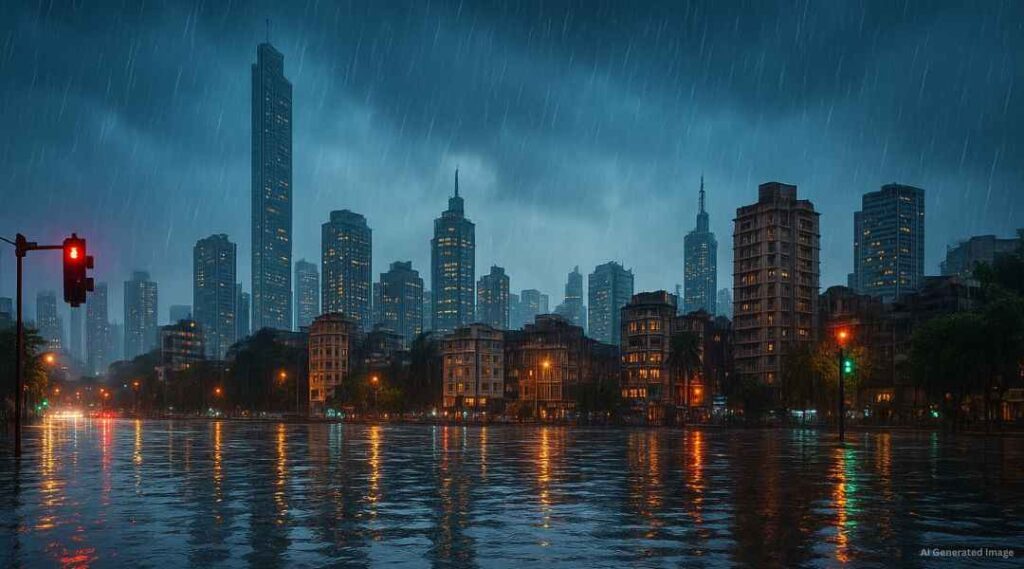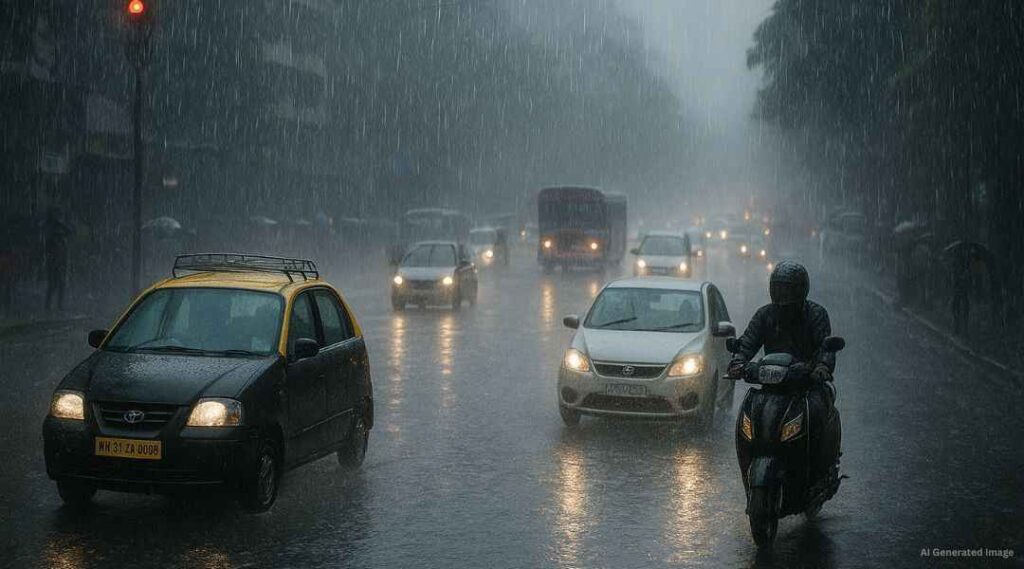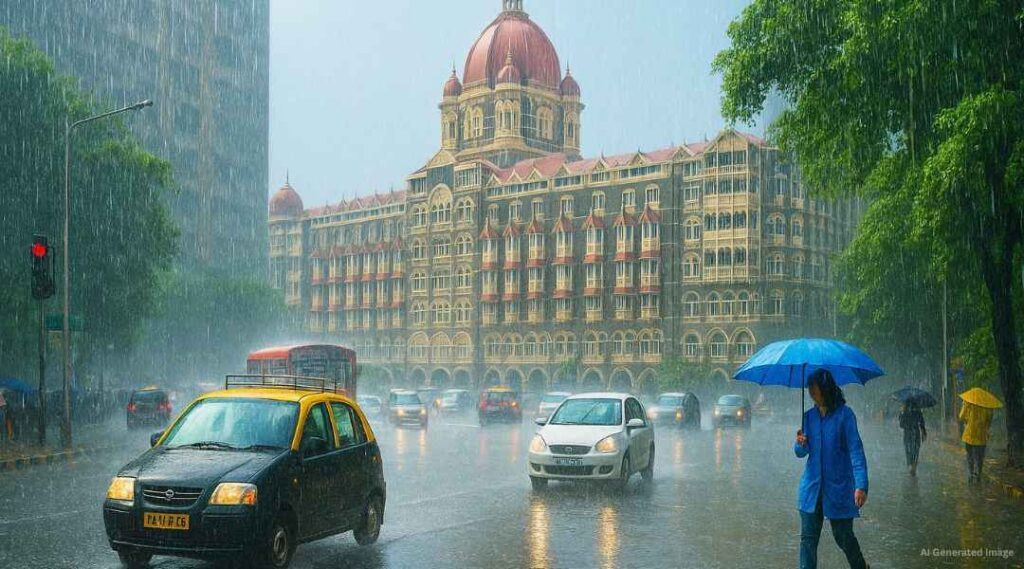In the heart of India’s monsoon belt, Mumbai is no stranger to dramatic weather, but August 2025 has unleashed a new level of crisis. Extreme rainfall alert is now the hottest search term on Google Trends—mirroring the public’s mounting concern as the India Meteorological Department (IMD) continues to upgrade warnings from yellow to orange for Mumbai and nearby districts.

On August 20 and 21, the city has seen well over 200mm of rain in a matter of hours, leaving vast stretches under water and throwing daily life into turmoil. The Mithi river, one of Mumbai’s vital drainage arteries, has swollen perilously close to its “danger mark”—prompting authorities to evacuate hundreds from low-lying areas like Kranti Nagar slums before disaster struck.
Headline Numbers and Alarming Trends
- Record rainfall: Some places in Mumbai and Maharashtra have logged over 300mm in 24 hours. Suburbs like Matheran registered a staggering 382.5mm rainfall, and water levels in reservoirs reached historic highs.
- Swelling rivers: The Mithi river nearly breached its banks, threatening to overflow after days of relentless downpour.
- Evacuations: Over 400-500 people had to be evacuated.
- Waterlogging & disruptions: Abundant images and videos show knee-deep water in commercial districts, waterlogged trains, and desperate commuters—all feeding into a sense of déjà vu for a city used to monsoon uproar.
- Weather warnings: The IMD retained an orange alert for the city, predicting continued moderate to heavy rainfall and gusty winds up to 50km/h.

A Weekly Outlook: Will the Rain Continue?
According to the IMD, extreme rainfall is likely to persist in Mumbai and other parts of Maharashtra throughout the week. The pattern is part of an unusually wet August, with the city already on track to beat its previous rainfall records—more than 48 inches so far in the season, surpassing marks set in 2020.
Expected weather for Mumbai:
- August 21: Moderate rain, 87% precipitation chance, highs around 28°C.
- August 22: Conditions stable, high humidity, more showers.
- Rest of the week: Persistent rainfall, risk of localized flooding, high tides continue to threaten coastal areas.
Read More: Flood Situation Near Krishna River: Karnataka’s Monsoon Crisis Unfolds
Why Is This Year Different?
- Overflowing infrastructure: Mumbai’s aging drainage lines, including the Mithi river, have long struggled to cope, and a recently exposed scam over river desiltation has heightened anxieties.
- Frequent alerts: 2025 has seen a rapid escalation of alerts—yellow, orange, then citywide red—affecting the public’s readiness and testing municipal capacity.
- Viral social media: Memes and real-time video updates, such as the viral “Mumbai Spider-Man” wading through water to clear drains, have both amused and disturbed citizens, highlighting the persistence of waterlogging and the city’s unique resilience.

Repercussions: From Commuter Chaos to Classrooms Closed
The floods brought the city’s famed suburban trains to a crawl and forced the University of Mumbai to defer major exams. Emergency teams responded to reports of tree falls, building collapses in landslide-prone areas, and minor rescues. Across Mumbai and nearby districts, people struggled through power cuts, interrupted municipal services, and dangerous water crossings.
The Mithi River: Lifeline or Liability?
The Mithi river has become a potent symbol of both Mumbai’s vulnerability and its capacity for recovery. As water levels rose almost overnight, the river exposed gaps in urban planning and the consequences of years of unchecked construction, illegal dumping, and delays in basic upkeep. Despite heavy investment, desiltation scandals and lack of disaster preparedness were laid bare when hundreds had to be urgently relocated.
Did You Know?
- The Mithi river catchment is critical to draining excess water during Mumbai’s monsoon.
- Blocked by waste and illegal structures, it regularly floods neighborhoods whenever rainfall exceeds drainage capacity—exactly what happened this week.
Public Response: Survival, Spirit, and Social Media
Yet amid the chaos, Mumbai’s spirit shone. Viral videos of locals battling flooding, witty memes, and crowdsourced traffic updates flooded social feeds, reflecting both the city’s frustrations and its dark humor. Volunteers and civic staff braved dangerous conditions to unclog drains and help stranded passengers. Emergency hotlines stayed busy, with the IMD and BMC issuing fresh advisories every few hours.
How to Stay Safe: Expert Tips
- Stay informed: Rely on IMD and BMC’s latest rainfall warning and extreme rainfall alert updates.
- Avoid unnecessary travel when orange or red alerts are active, especially near rivers and low-lying roads.
- Prepare for disruption: Stock up on essentials, monitor power and water supplies, and check routes before stepping out.
- Evacuate if advised: Don’t ignore warnings about rising river levels, especially near the Mithi.
- Be flood smart: Turn off electricity upon water entering your home, avoid wading through standing water, and help inform rescue authorities about stranded people.
Conclusion
Mumbai’s current extreme rainfall alert and “orange alert” status serve as a wake-up call—not just for residents but for urban planners and policymakers across India. What’s happening along the Mithi river and Mumbai’s flooded lanes is a dramatic reminder that with climate patterns shifting and infrastructure stretched, preparedness, timely action, and public awareness have never been more critical. As the rains continue, Mumbai stands at a crossroads between resilience and risk—a city watching the skies but also looking within.
Stay tuned for more updates on “today’s news,” rainfall warnings, and IMD advisories. For Mumbai, every monsoon is a test—and 2025’s is still far from over.

